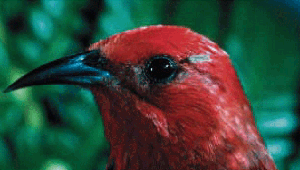Threats
Predators
Predators such as feral cats, mongooses, and rats eat ʻAlalā eggs and chicks.
Check out the American Bird Conservancy’s “Cats Indoors” campaign.
Learn more about mongoose from the Hawaiʻi Invasive Species Council invasive species profiles.
Disease
Like other native forest birds, ‘Alalā can get sick from avian malaria carried by mosquitoes but it is not fatal to them. A disease that is fatal to ʻAlalā is toxoplasmosis carried by feral cats and rats. Pox virus, transmitted by mosquitoes or through contact, can cause debilitating lesions.
Mosquitoes were once only a problem at low elevations where there were warm conditions for them to breed and survive. As our climate warms, mosquitoes are now being found at higher elevations causing further harm to native forest birds.
Learn about avian malaria and the efforts to control mosquitoes in Hawaiʻi by clicking here.
What is toxoplasmosis and how does it harm ʻAlalā? Click here to find out.
Habitat Loss
Forests that ‘Alalā once called home have been changed by human activities like development, agriculture, and ranching. Cattle, sheep, and pigs can consume and destroy understory plants.
Due to the loss of trees and understory shrubs, ‘Alalā have less food to eat and limited cover to hide from predators.
